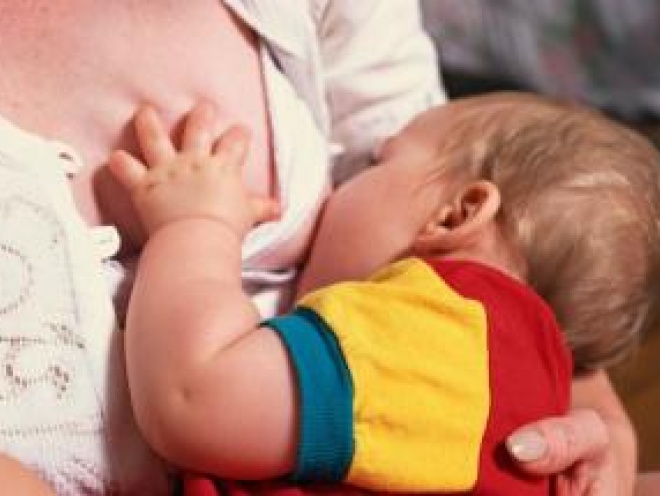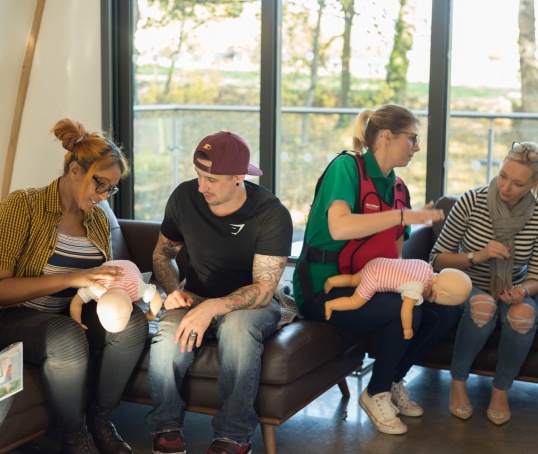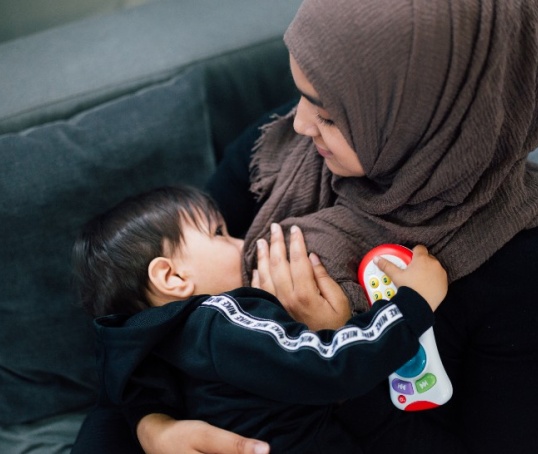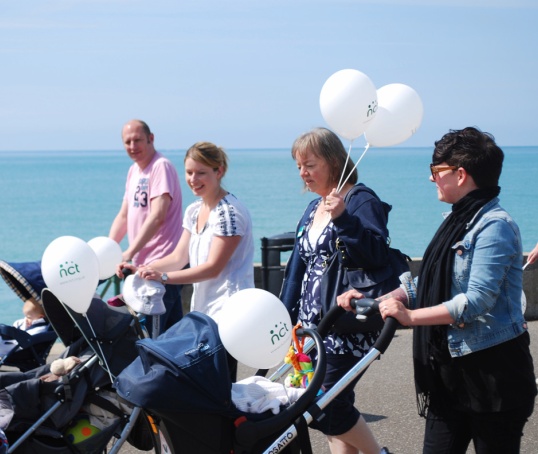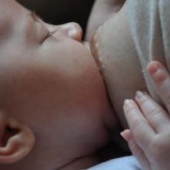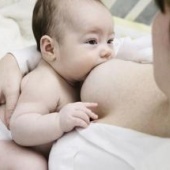Mastitis is a painful breast condition. Here we discuss its symptoms, treatment, how to continue breastfeeding with mastitis and how to help prevent it.
Mastitis symptoms usually develop quickly, with signs of inflammation normally appearing in one breast, often alongside feeling like you have flu. It’s most common in women who are breastfeeding.
What is mastitis?
Mastitis causes a woman’s breast to become swollen, painful, inflamed and it might appear red or darker, depending on skin colour. It usually occurs within the first three months after giving birth (NHS Start for Life, no date).
Mastitis symptoms
Mastitis usually occurs in one breast, but may affect both. Symptoms usually develop quickly and might include:
- a lump on the breast that is sore and hard (also see our article about blocked milk ducts); it might feel hot and painful to touch, and the area may be red or dark, although this can be more difficult to see on darker skin
- a burning pain that might be continuous or happen while you’re breastfeeding
- nipple discharge that's white or contains traces of blood
- flu-like symptoms, for example feeling tired and achy, and having a fever and chills.
(NHS, 2023)
What causes mastitis?
Mastitis is often caused by excess milk in the breast leading to inflammation of the milk ducts and a disruption of the makeup of the breastmilk or microbiome.
You might get mastitis because:
- you have an abundant supply of breastmilk
- you are feeding your baby and also expressing as well
- your baby is not attached well to the breast, and you need support to find a position that is comfortable for both of you
- your baby is missing feeds, or you are delaying feeds, or maybe missing feeding cues (perhaps as a result of using a dummy)
- you are weaning from the breast, (it's better to reduce breastfeeds gradually).
- the kind of birth you have could also affect the chance of mastitis. This is because both caesarean surgery and the antibiotics received as a result of surgery disrupt the mother's microbiome.
- something is putting pressure on the breast or has bruised it; for example, a tight bra or tight clothing, bag strap, seat belt, baby carrier
- Using nipple shields has been associated with an increased likelihood of mastitis
- In some cases, a large breastmilk supply can cause an imbalance in the breastmilk causing the growth of harmful bacteria. This is called infective mastitis and you might need antibiotics to treat it.
(La Leche League GB, 2023; NHS, 2023; Mitchell et al, 2022)
For some women mastitis recurs every couple of weeks. This could be because:
- Previous issues of attachment, position, or supply were not resolved.
- Previous infectious mastitis was not resolved with antibiotics.
(Mitchell et al, 2022)
Continuing to breastfeed with mastitis
If you develop mastitis, continuing to breastfeed in response to your babies needs will help improve the symptoms and won’t harm your baby. It has previously been thought that extra feeding or expressing was helpful along with breast massage, however there is now evidence this will not help and may make things worse.
(La Leche League, 2023; NHS, 2023; Mitchell et al, 2022)
Mastitis treatment
Mastitis is usually easy to treat, and most women recover well and quickly. Some self-help measures can be helpful, such as:
- continuing to breastfeed in response to your baby’s needs
- getting lots of rest and relaxation
- applying cold to the affected area
- staying hydrated
- using paracetamol or ibuprofen for relief from pain or fever
- avoiding tight or restrictive clothes or bras until symptoms improve (see our article about maternity and nursing bras for more tips).
- avoid nipple shields unless essential for feeding your baby. If using nipple shields seek support from a breastfeeding counsellor to use them without causing further issues
(NHS, 2023; Mitchell et al, 2022)
Continue with self-help measures, and if the inflammation has not cleared after 12-24 hours, or symptoms worsen (eg a fever and flu-like symptoms), you could see your GP (NHS, 2022).
You might need antibiotics to treat mastitis if there is an infection, however antibiotics will not be helpful if no infection is present. If you're breastfeeding, your GP will be able to prescribe antibiotics that are safe to use while breastfeeding.
You might also need to contact your GP if you:
- continue to feel feverish or if your temperature rises above 38.4°C
- see pus or blood in your milk
- have a cracked nipple that looks infected
- see red streaks on your breast or your breast becomes red, hot and swollen.
(NHS, 2023; Mitchell et al, 2022)
Some women with mastitis or recurrent mastitis can develop a breast abscess – a collection of pus, which might need to be drained surgically (Mitchell et al, 2022).
Preventing mastitis
If you find you have recurring mastitis, it's a good idea to seek breastfeeding support to help make adjustments to your baby’s latch and to discuss ways to manage your breastmilk supply. It might also be helpful to check that your baby doesn’t have any underlying medical conditions, such as a tongue-tie. Try to take these steps to help prevent mastitis:
- Ask a breastfeeding counsellor to observe a feed and check that baby is latching well and feeding efficiently.
- If expressing as well as breastfeeding, build up the frequency slowly.
- If you have infective mastitis, ask your GP about a breast milk culture to ensure the right antibiotics are being used.
- When weaning from the breast, reduce breastfeeds gradually.
(NHS 2023)
This page was last reviewed in July 2023
Further information
We support all parents, however they feed their baby. If you have questions, concerns or need support, you can speak to a breastfeeding counsellor by calling our support line on 0300 330 0700 (open 8am to midnight every day of the year), whether you are exclusively breastfeeding or using formula milk.
Breastfeeding counsellors have had extensive training, will listen without judging or criticising and will offer relevant information and suggestions. You can also find more useful articles here.
Best Beginnings - Bump to Breastfeeding, Chapter 7 'Overcoming Challenges'.
Sarah Oakley’s parent-friendly explanation of ‘The Mastitis Spectrum’
National Breastfeeding Line (government funded): 0300 100 021.
You might find attending one of our NCT New Baby courses helpful as they give you the opportunity to explore different approaches to important parenting issues with a qualified Postnatal Practitioner and other new parents in your area.
Make friends with other parents-to-be and new parents in your local area for support and friendship by seeing what NCT activities are happening nearby.
La Leche League GB. (2023) Mastitis. Available from: https://www.laleche.org.uk/mastitis/ [Accessed 3 July 2023].
Mitchell, K. B. et al (2022) ‘Academy of Breastfeeding Medicine Clinical Protocol #36: The Mastitis Spectrum, Revised 2022’, Breastfeeding medicine, 17(5) pp. 360-376 Available from: https://www.bfmed.org/protocols
NHS. (2023) Mastitis. Available from: https://www.nhs.uk/conditions/mastitis/ [Accessed 3 July 2023].
NHS Start for Life (no date) Mastitis. Available from: https://www.nhs.uk/start-for-life/baby/feeding-your-baby/breastfeeding/… [Accessed 3 July 2023]
